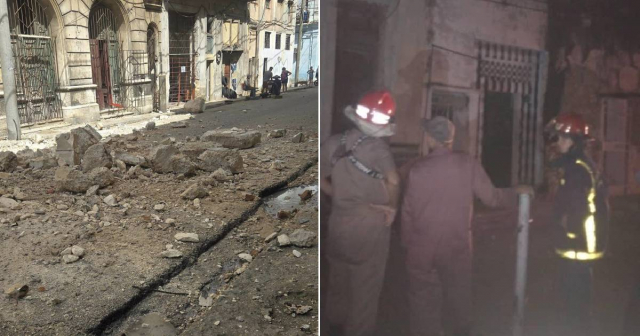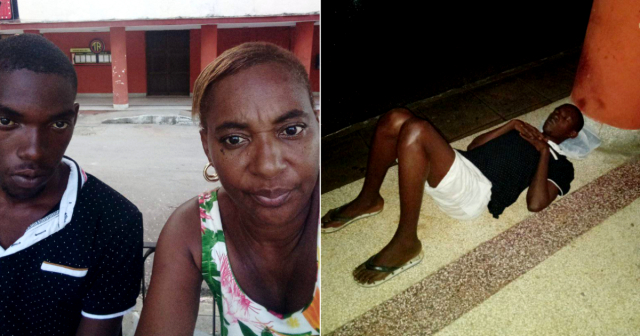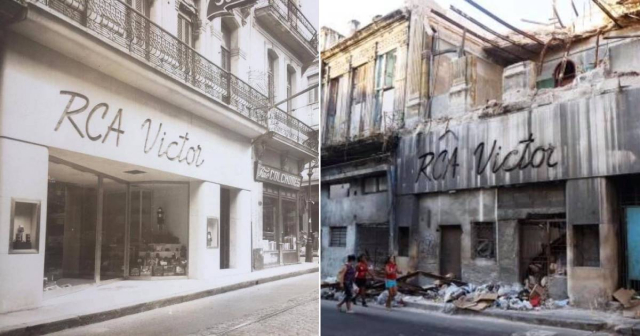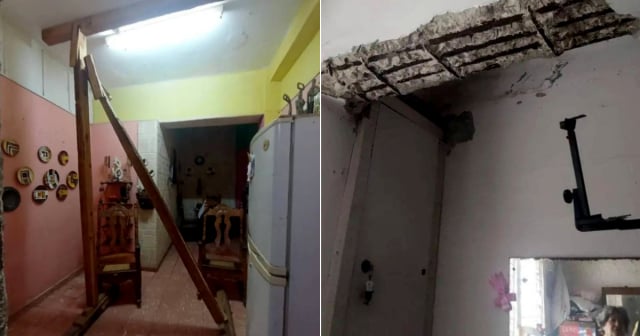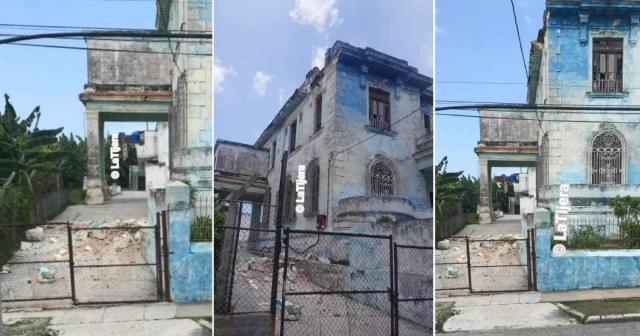
The celebration this Monday of a march in solidarity with the people of Palestine, which took place along the Havana Malecon led by the ruling Miguel Díaz-Canel, prompted a Cuban activist to suggest holding upcoming events of this kind in Centro Habana, where the buildings resemble the ruins of Gaza after the bombings by Israel.
Accompanied by Prime Minister Manuel Marrero Cruz and the President of the National Assembly of People's Power, Esteban Lazo Hernández, the Cuban leader marched alongside a thousand officials, students, and workers mobilized for the event, from Fragua Martiana to the so-called Antimperialist Tribune.
The tour of the Havana Malecón outraged Cuban activist Adelth Bonne Gamboa, who invited the Cuban regime through his social networks to hold marches of this kind through the streets of Centro Habana, so that the leaders and their sympathizers could feel in a more supportive environment with the Palestinians, surrounded by crumbling buildings and people in need of humanitarian aid.
"I propose to the regime that the next Pro Palestine march take place on San Lázaro Street, in Centro Habana, so that amid rubble, piles of debris, and mountains of garbage, they have the scenery to get the idea that they are there," said Bonne Gamboa in a post on X (formerly Twitter).
Called by the Union of Communist Youth, the march condemned what the organization considers "the genocide being committed by Israel against the Palestinian civilian population."
While the solidarity of the Cuban regime is directed towards the Palestinian population, hundreds of thousands of Cubans live in extreme poverty, without solutions to their housing problems, in crumbling buildings, with families in shelters or crowded conditions, without access to running water, and with electrical service limited by blackouts.
In the capital of Cuba, particularly in the municipalities of Centro Habana and Habana Vieja, thousands of families live in buildings at risk of collapse or that have already suffered partial collapses. Structurally weak, the buildings in these areas have been abandoned for decades, without maintenance or solutions to the sanitation and supply issues they face.
At the end of September, following the heavy rains associated with the passage of Hurricane Helene through the westernmost part of Cuba, two landslides were reported in Old Havana.
Days earlier, Argentine journalist and influencer Melina Moriatis shared a video on her social media showing the destruction and decay of Havana.
Ruined buildings, streets covered with garbage, puddles of water, and decay on the sidewalks were photographed by Moriatis in a graphic testament to the decline of the Cuban capital, dated September 2024.
In mid-August, the partial collapse of a building in Centro Habana was recorded by Cubans who witnessed the scene and the critical moment of the balcony's fall from the building.
The same regime that claims to be dismayed by the suffering of the Palestinians is indifferent to the pain of hundreds of thousands of Cubans who are suffering from housing problems.
While the policies aimed at addressing these needs fail year after year increasingly, the Cuban regime continues to allocate resources for the construction of hotels and infrastructure for tourism that is controlled by the Business Administration Group S.A. (GAESA), in the hands of the military and leaders of the dictatorship; a situation that increases the discontent of the population.
What do you think?
COMMENTFiled under:

